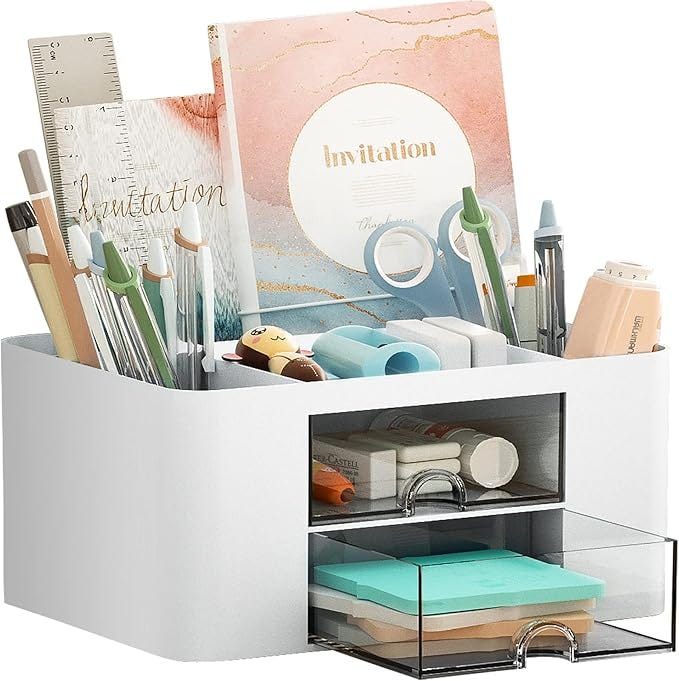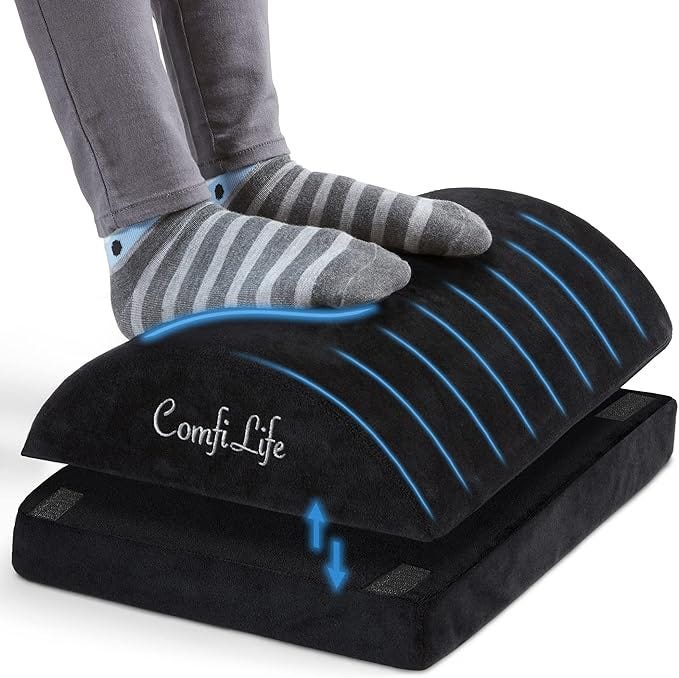Inflation Is Down...Why Don't You Feel It?
Why groceries are still high and what to do about it!
Here’s what to expect in this newsletter!
(P.S. If this newsletter is cut off in your email just visit our Substack!)
📰 Interesting financial news: Stay up to date on what’s happening in the economy.
📈 What’s popping in the stock market: The 411 on trending/interesting stock market news.
📝 This week’s main topic: What this newsletter’s title is about!
🥰 Team CGF’s Amazon favs: Affordable yet helpful Amazon finds.
📰 Interesting financial news
The Fed’s rate cuts were supposed to make borrowing cheaper. So why is it harder than ever to buy a house? (MarketWatch)
How the great wealth transfer is playing out for billionaires. (The Daily Upside)
📈 What’s popping in the stock market
Is Nordstrom going private in $6.26 billion deal a good move? (Ticker Symbol: JWN)
Wall Street’s new year’s resolution: Launch more IPOs.
📝 Main topic: The rate of inflation vs the cost of living
The Bureau of Labor Statistics reported that inflation was at 2.7% in November 2024 compared to 9.1% in 2022. However, if you’ve purchased groceries recently, you probably feel like nothing has changed.
Inflation is the rate at which prices increase over time. Unfortunately, it doesn’t always translate to lower prices when inflation decreases. (When prices go down, it’s known as deflation and can be a sign of a weak economy.)
While this news might sound like a catch-22, declining inflation is good news overall because it means that prices are rising at a slower rate. Yet many middle-class families and individuals are still struggling with the high costs of healthcare, housing, child care, and groceries.
According to a Primerica survey, 73% of middle-class families struggle to save even after cutting back on non-essential expenses.
The harsh reality is that consumers may not see a price decrease soon. So, what can you do in the meantime?
Here are some ways to save money and make life more affordable.

9 Ways to save money during inflation
Saving money in this economy may seem impossible, but there are ways. Here’s what you can do to keep more money in your pocket:
1. Look into cheaper meal options
Grocery shopping can feel like a gamble. You grab what you need, hold your breath at the checkout counter, and hope your total amount isn’t over budget. To minimize your costs, you may need to reevaluate some of your food items.
Baked goods and pre-cooked meals are often priced at a higher cost. Consider purchasing ingredients to make these types meals at home. It might take some time to make but can be more cost-effective and can be a fun experience!
Consider trying out simple one-pot recipes that are cost-efficient, delicious, and don’t take too much time.
2. Shop at different stores
We all have our go-to grocery store, but sticking to the familiar may cost you money. Shopping at stores like as Aldi, Walmart, or Trader Joe’s, which are known for their lower prices, can help you save money.
Plus there are tons of social media accounts and YouTube channels dedicated to the best items you can buy at these stores too. Who says you have to skimp on quality?
You can also consider shopping at a local farmers' market since buying locally can be more cost-efficient.
3. Use coupons and discount apps
We know cutting out coupons isn’t glamorous, but it could save you a significant amount on groceries.
If you don’t have the time to look through and cut out coupons, try coupon websites or download a coupon app on your phone.
Some useful apps include:
Flipp: An app that gives you the online version of your favorite store's weekly flyer and some of the deals being offered.
Ibotta: This app shows which items offer rebates at any given time.
Store apps from your favorite stores, such as Target, Sam’s Club, and Whole Foods, offer daily and weekly discounts.
4. Prioritize your health to reduce healthcare costs
Medical care can be incredibly expensive and so it’s really important to practice preventive care. Ensure you’re eating a nutritionally dense diet and exercise regularly to keep your body in shape.
Also, don’t ignore the signs when you feel under the weather. Take some time off, and get any necessary medication if needed.
Other ways you can reduce your healthcare costs include:
Asking your provider to switch your medication to a generic brand. Generic medications have the same ingredients but often cost less.
Asking your employer if they offer an HSA or FSA, which are savings accounts where you can save pre-tax money for health expenses.
Note: you own an HSA, which can be transferred to a new employer, but an FSA is owned by an employer and must be used within a year.
5. Consider different childcare options
Finding the best childcare for your children can be difficult to find but not impossible. Here are some things to consider when finding a place for your little angels.
Consider childcare subsidies, which are financial aid programs that help low-and moderate-income families cover the costs of childcare.
Look into tax credits such as Earned Taxed Credit or Child and Dependent Care Credit
Consider low-cost, government-funded programs such as Headstart
Starting saving for childcare early
6. Readjust your budget
Even though you can’t control the price of goods, you can control where and how you spend your money.
Take some time to re-evaluate your budget. Are there any expenses you can cut? Are there opportunities to save money for future expenses?
7. Find alternative forms of entertainment
With more money having to go towards basic needs such as food and rent, you may find yourself limited in attending social events. While it may not be in your budget to go out for drinks every Friday night, there are still ways to enjoy yourself.
Some free or low-cost activities can include:
Visiting museums on their free entry days
Having movie nights at home
Hosting dinner potluck parties
Throwing a game night
8. Ask for a raise
A simple way to keep up with inflation is to make sure your salary is in line with the current economic changes.
Asking for a raise can put more money in your pocket and help you deal with the higher cost of living. Be sure to prepare a clear case highlighting your accomplishments, demonstrate your value to the company, and confidently request a meeting to discuss your compensation.
9. Start a side hustle
It might be time to start making some money on the side. While social media is flooded with people saying you can make $100 an hour with a side hustle, starting a side gig takes time and research.
First, consider what skills you have that can solve a problem. Think about what service you could offer and what people would be willing to pay. Some common side hustles include:
Starting a cleaning business
Online tutoring
Social media manager
Virtual assistance
However, there are many more options, and it starts with you deciding what is right for you.
- - -
Even though the cost of living is high, saving and reaching your savings goals is still possible. If you need support managing your money in this economy, check out our free course on building a financial foundation!
Need more hands on help? Explore our one-on-one coaching options!

🥰 Team CGF’s Amazon Favs: Cozy must-haves for a productive home
Working from home is great until it’s winter time and your home office turns into the North Pole. You could turn on the heat, but you don’t want to see the bill after using your heating all day.
So, what’s the solution? Make your home warm and cozy while still staying productive. Check out these must-have items.
P.S. If you make a purchase we may earn a commission, this helps us grow!
1. Yusoki Sherpa Throw Blanket

If you’re like me, working with a blanket draped across your lap is essential work attire. Having a soft light-weight blanket like this Yusoki Sherpa blanket helps me focus and stay warm at the same time.
The great thing about blankets is that they are versatile. They can be your work companion; you can take them with you for a midday nap on the couch or drape them over a chair to add some decoration.
2. Desk Organizer

They say that a cluttered space leads to a cluttered mind. If you ever find yourself struggling to focus while at your desk, you may need to clean up your space.
Gather all your pens, markers, sticky notes, paper clips, and other office supplies, and find a home for all your miscellaneous things with this Marbrasse desk organizer. No more digging to the bottom of your drawer to find a pen. Have your office supplies ready and available whenever you need them.
You’ll be surprised how much better your workday flows with some organization.
3. ComfiLife Under Desk Foot Rest

You spend countless hours at your desk, so you might as well be comfortable with a cushioned footrest. More than just a place to put your feet, this under-desk footrest can help you achieve proper alignment.
When your body is aligned, you can ease the pressure off your lower back and hips, reducing the aches and paina you feel when you get out of your chair.
Composed of high-quality memory foam, this footrest molds to your feet, no matter their size. Allow yourself a little extra comfort to get through the day.






